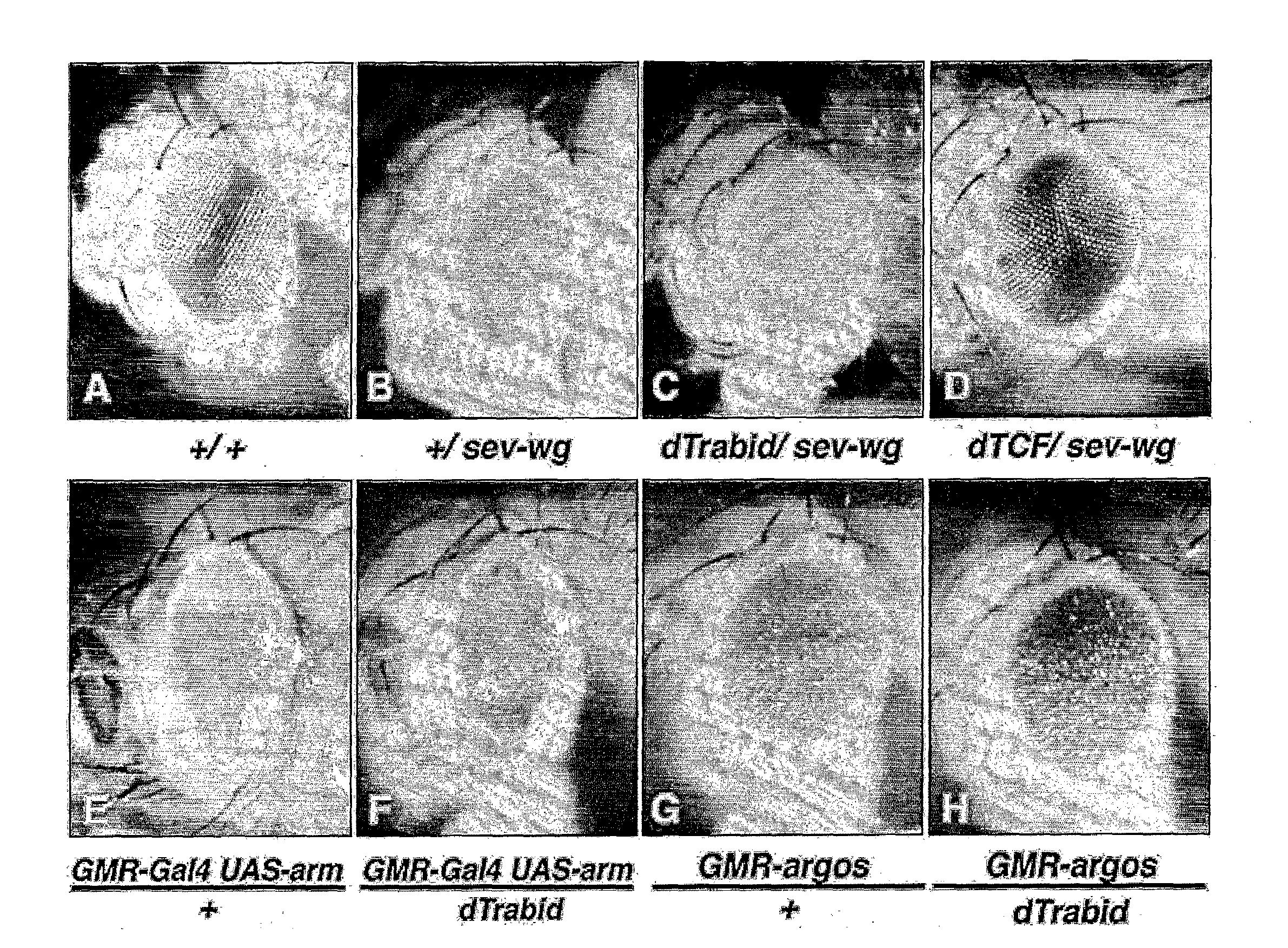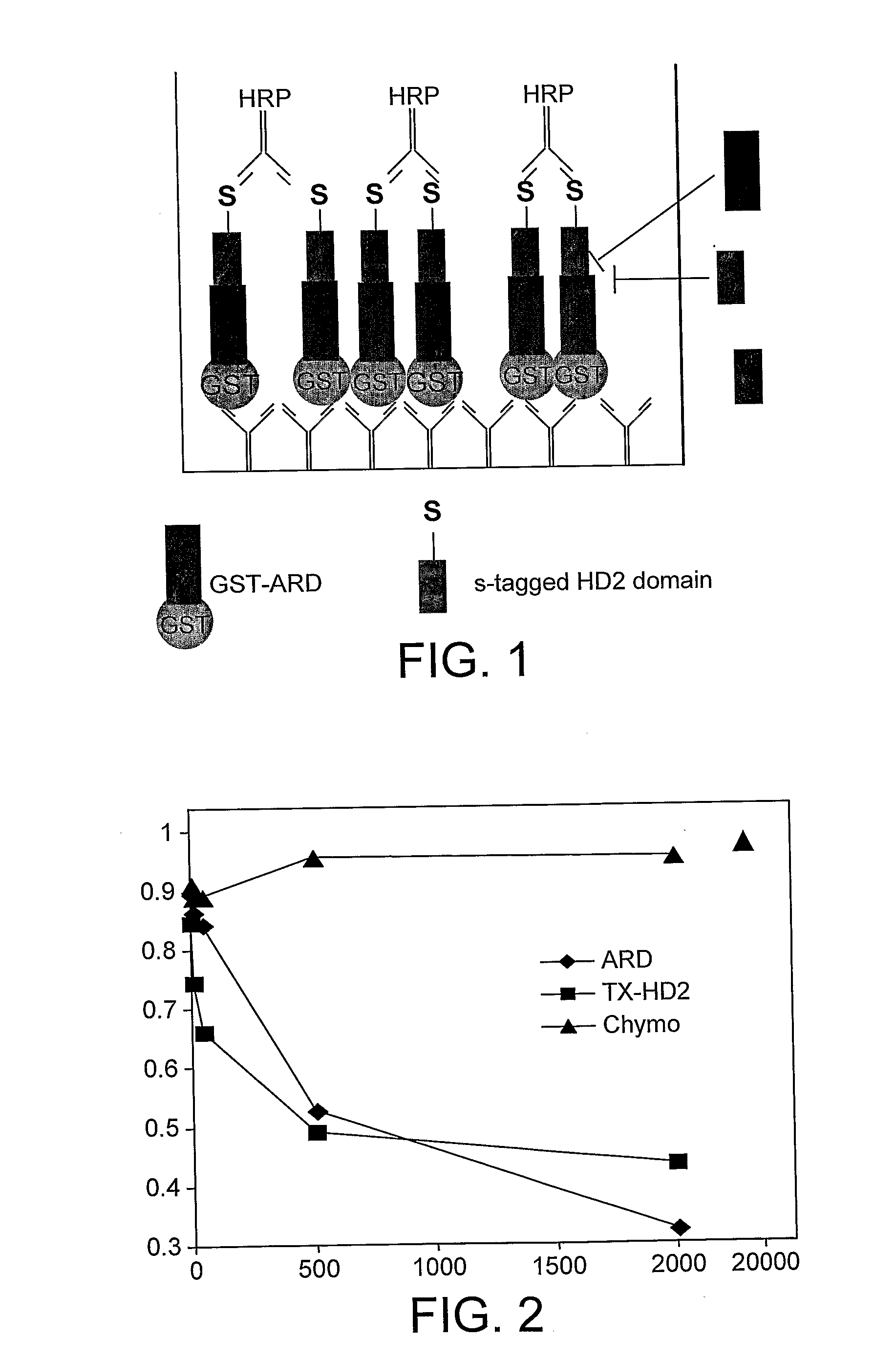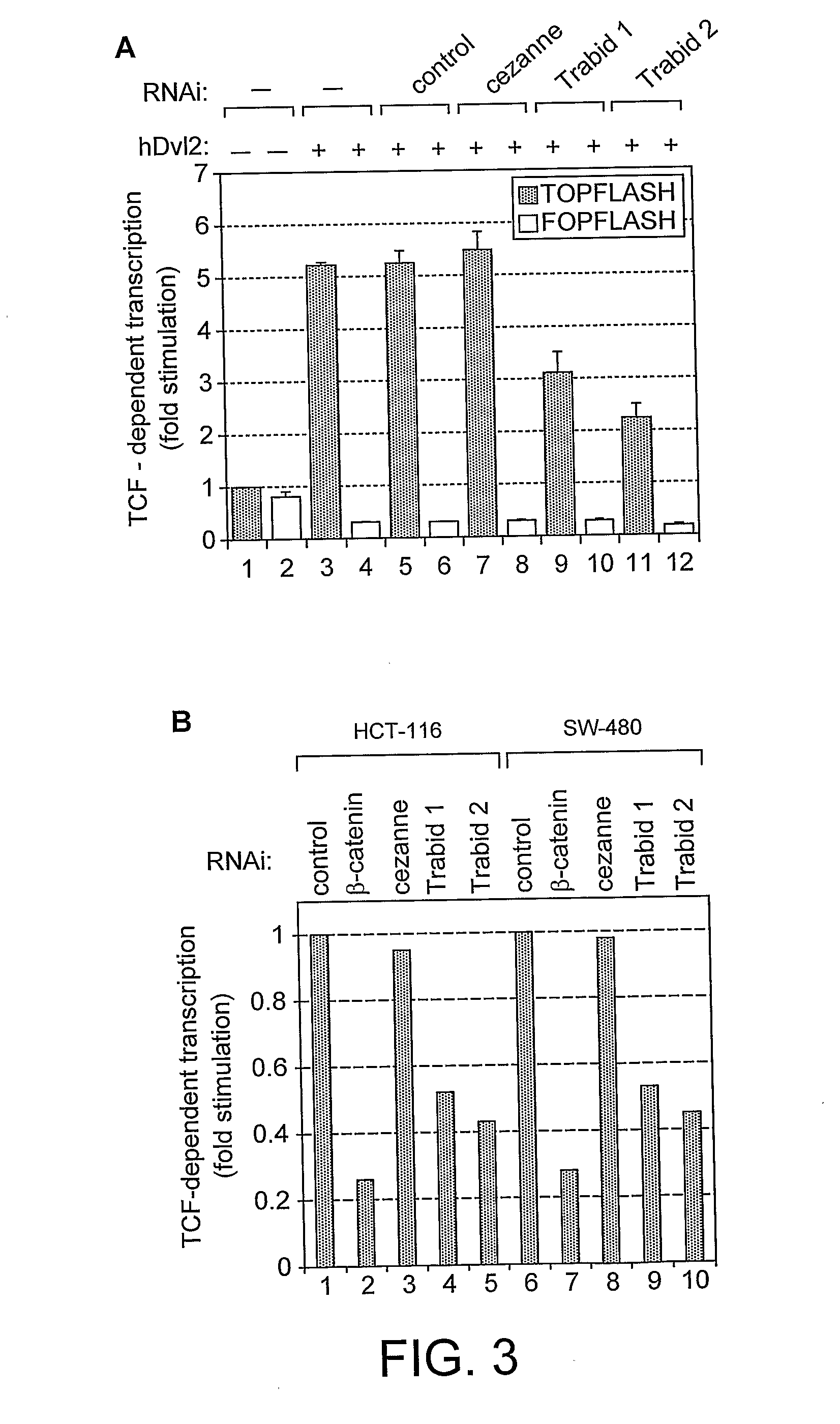Screening method
a technology of apc and apc, applied in the field of wnt signalling pathway, can solve the problems of unclear or unknown functional relevance of apc, poorly understood molecular function of apc protein, and achieve the effect of reducing the cost of assay materials and allowing greater choi
- Summary
- Abstract
- Description
- Claims
- Application Information
AI Technical Summary
Benefits of technology
Problems solved by technology
Method used
Image
Examples
example 1
Identification of Proteins that Mediate the Functions of the ARD of APC in Wnt Signalling and Cell Adhesion
[0209]The ARD of E-APC is critical for its association with adherens junctions, and for its function in Wnt signalling, in particular for its ability to form a complex with Axin in vivo (note however that the Axin-binding motifs of APC proteins are outside the ARD). Indeed, these functions are abrogated by a single mis-sense mutation, N175>K (corresponding to N507 in APC), which is expected to affect the binding of ARD to its ligands, based on structural considerations.
[0210]To identify proteins that mediate the functions of the ARD of APC in Wnt signalling and cell adhesion, we conducted a yeast two-hybrid screen of a mouse embryonic library with the wild-type ARD domain of APC as bait, and counter-screened the isolates with the N507>K mutant domain. This led to the identification of a protein called Trabid.
[0211]The specificities in the binding of Trabid to wild-type versus m...
example 2
The Function of Trabid in Wnt Signalling
[0212]We demonstrate that Trabid is a deubiquitylase enzyme (‘DUB’ enzyme). We further show that Trabid promotes Wnt signalling in mammalian cells.
[0213]Loss-of-function analysis, based on depletion by RNAi, revealed that Trabid (but not Cezanne) is required for efficient TCF-mediated transcription in colorectal cancer cells mutant for APC or β-actenin.
[0214]Epistasis analysis based on the same approach placed Trabid below activated β-catenin. Importantly, Trabid depletion does not, affect NFκB-mediated transcription, so its effect on TCF-mediated transcription appears to be specific.
[0215]The OTU domain of Trabid has DUB activity in vivo and in vitro, and its NZF region binds to ubiquitin chains, with a preference for K63-linked chains. Taken together, this evidence suggests that a de-ubiquitylation step is critical for efficient TCF-mediated transcription. Ubiquitin turnover at TCF target genes may be necessary for their sustained transcript...
example 3
Biochemical and Biological Characterisation
[0216]Trabid has been biochemically characterized according to the present invention. This has confirmed elements of its function noted above and allowed further development of assays and applications of the invention.
[0217]FIG. 3 shows a range of biochemical results establishing Trabid function. In particular, FIG. 3(a) and (b) show transcriptional effects mediated by Trabid. Furthermore, it is shown that inhibition of Trabid diminishes TCF mediated transcription.
[0218]Specifically, depletion of Trabid is mediated by different Trabid inhibitors. In this example the two Trabid inhibitors used are siRNAs to Trabid. The two siRNA sequences are: AGA GGT GTC TCA ACA AGC A (no 1) and AGA GGC TTC TTC AAT AAT A (no 2).
[0219]These inhibitors each reduce Dv1-stimulated TCF transcription in 293T cells (FIG. 3a), and in the colorectal cancer cell lines HCT-116 and SW-480 (FIG. 3b).
[0220]Epistasis experiments in 293T cells reveal a function for Trabid ...
PUM
| Property | Measurement | Unit |
|---|---|---|
| pH | aaaaa | aaaaa |
| pH | aaaaa | aaaaa |
| pH | aaaaa | aaaaa |
Abstract
Description
Claims
Application Information
 Login to View More
Login to View More - R&D
- Intellectual Property
- Life Sciences
- Materials
- Tech Scout
- Unparalleled Data Quality
- Higher Quality Content
- 60% Fewer Hallucinations
Browse by: Latest US Patents, China's latest patents, Technical Efficacy Thesaurus, Application Domain, Technology Topic, Popular Technical Reports.
© 2025 PatSnap. All rights reserved.Legal|Privacy policy|Modern Slavery Act Transparency Statement|Sitemap|About US| Contact US: help@patsnap.com



